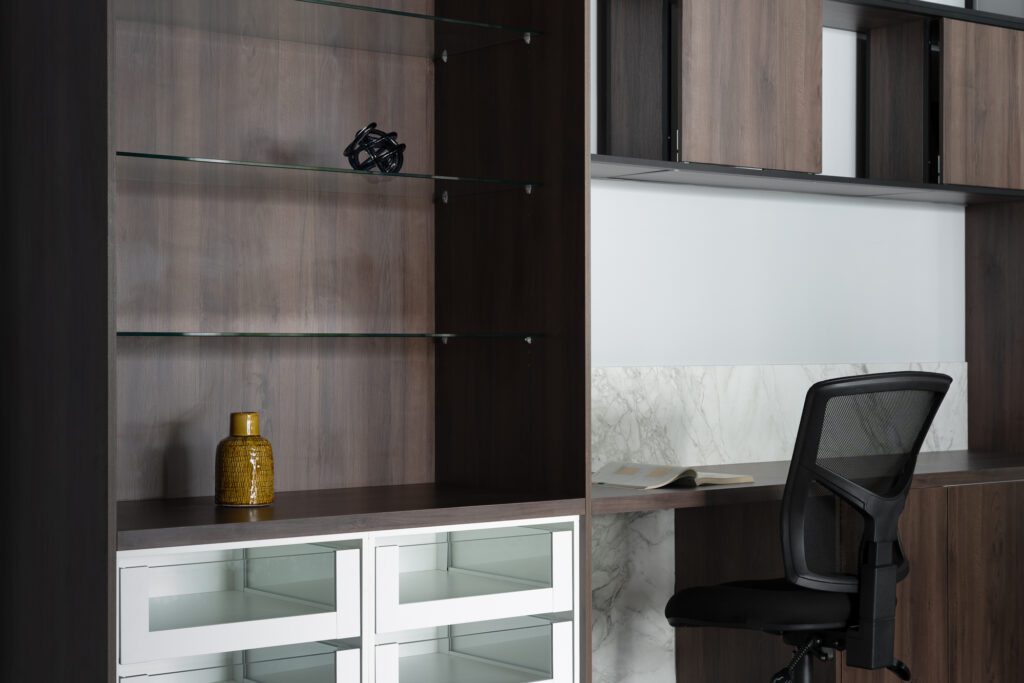Facing Embodied Carbon with Responsible Specification
Building, Construction, Design
Building, Construction, Design
This is a sponsored article from SustainabilityTracker.com member ForestOne.
The Footprint Company develops tools and data to help climate-active businesses deliver net zero carbon projects. Here, The Footprint Company founder Dr Caroline Noller offers three key pathways architects, designers and specifiers have in their control to effect change on a meaningful level.
The Scale of the Problem
The construction of buildings makes up to 40 per cent of annual global carbon emissions 1. After decades of messaging that has focused on energy efficiency and converting to electric cars, this figure surprises many people. But the energy that goes into manufacturing and transporting products like concrete, steel, plaster and ceramic tiles is enormous.
A principal reason that construction makes up such a large proportion of emissions is our desire for new built infrastructure, including internal space design. While something like a road may have a practical design life of 40 years or more, our interior spaces cycle through many more refits than a building overall. Retail and office spaces have a high turnover of refits owing to their lease lengths – five-to-10 years – and the need to keep pace to meet changing customer trends.
The upfront carbon intensity of a typical A-grade office fitout in Australia is about 1,700kg CO2-e/m2 NFA, excluding make-good. A non-food retail tenancy is about 800kg CO2-e/m2 GFA, excluding services. Of these figures, about 36–40 per cent is associated with floors, walls, built-in joinery and furniture, including work stations, benches, lockers, etc2. ‘Upfront’ in this context incorporates A1–A5 cradle to doors open.
The difference between an ‘average’ business- as-usual upfront carbon performance, and one that is Paris 1.5C consistent – that is, one that has applied circular economy design principles to maximum extent – is generally 40 per cent. Circular economy principles include adapting and repurposing, reducing or dematerialising through design efficiency or alternative design, recycling or recycled content materials and low- or no-carbon footprint materials.
Beyond the obvious opportunity to design all fit-outs to be effectively repurposed with little effort, I encourage readers to consider other strategies and the scale of reduction you can personally direct. Three of the key pathways architects, designers and specifiers have in their control to effect change are dematerialising through alternative design and recycling, within the context of recycled content of materials.

Pathways to Carbon Reduction
1. Adaptive Re-use
Designing to adaptively re-use existing fit-out elements and materials is consistently a triple-bottom-line winner. Where done well, solutions save time, carbon and money – the trifecta. We typically see carbon reduction of 20–25 per cent when designers adapt ceilings, floors and workstations. With more than one million tonnes of waste from office strip-outs going to landfill each year3, re-using these materials also has the positive effect of reducing landfill.
Investa Property Group and Grosvenor Place have seen the benefits of this strategy within the context of their net zero carbon journeys for a number of “spec” fit-outs. These are leasing agent-approved, providing proof that “repurposed” does not have to be “lesser”.
2. Low Carbon and Dematerialised Design Alternatives
A key advantage of measuring the upfront carbon impact of a design in accordance with cost management practices is the connection of carbon impact to the design element. Understanding the upfront carbon intensity of a design element – for example a partition wall – and how it compares across different versions of the same functional performance is critical to effect ‘dematerialised’ design.
We see the challenge of plasterboard walls as an ‘elephant in the room’ issue for all fit-out types, whether it is with steel framing, set plasterboard or insulation. Plasterboard walls in the way we specify and build them is a one-way process to waste – there is no design for deconstruction or re-use. I am interested to see the potential of Eurolight® as a possible alternative to plasterboard walls. These panels are designed to eliminate waste by connecting together without glue to enable adaption, minus waste, for future layout churn. The upfront carbon intensity of 1m2 of Eurolight® is about 39 per cent lower than a traditional wall. With internal walls comprising up to 20 per cent of a typical office fit-out, the overall impact to total upfront carbon is significant.
3. Recycled Content and Low Carbon Supply
The third pathway to carbon reduction is considering recycled content materials with low carbon production sources. As mentioned, built-in-joinery, fittings and furniture are a significant contributor to interior fit-outs globally. If nothing else, seeking supply options with high recycled content is a relatively easy win for projects. EGGER panel products have up to 65 per cent recycled content, which has the effect of reducing carbon intensity by 39–60 per cent depending on the product and its application. The Hettich Showroom case study on the following pages highlights the benefit of these products in a recent example. Accepting that built-in joinery and furniture is a key design feature of most projects, pursuing the recycled content pathway is an easy way of tackling carbon without challenging the design vernacular or brief requirements.
Embodied carbon is the next big problem we need to tackle, and urgently, if we’re to have a hope of staying below 1.5°C global warming. For designers and interior architects, the urgency of this message can be over- whelming in the face of day-to-day client needs – but tackling one or two of the suggestions outlined has the potential to make an impact on the cuts we need to see.
Over the past 20 years of developing FootprintCalculatorTM and GreenBookTM I have been pleased to see more and more carbon-light options coming onto the market. Companies like ForestOne, and the products they distribute, give the specifier new options so they can play their part in solving the climate crisis.
This is an article from a SustainabilityTracker.com Member. The views and opinions we express here don’t necessarily reflect our organisation.